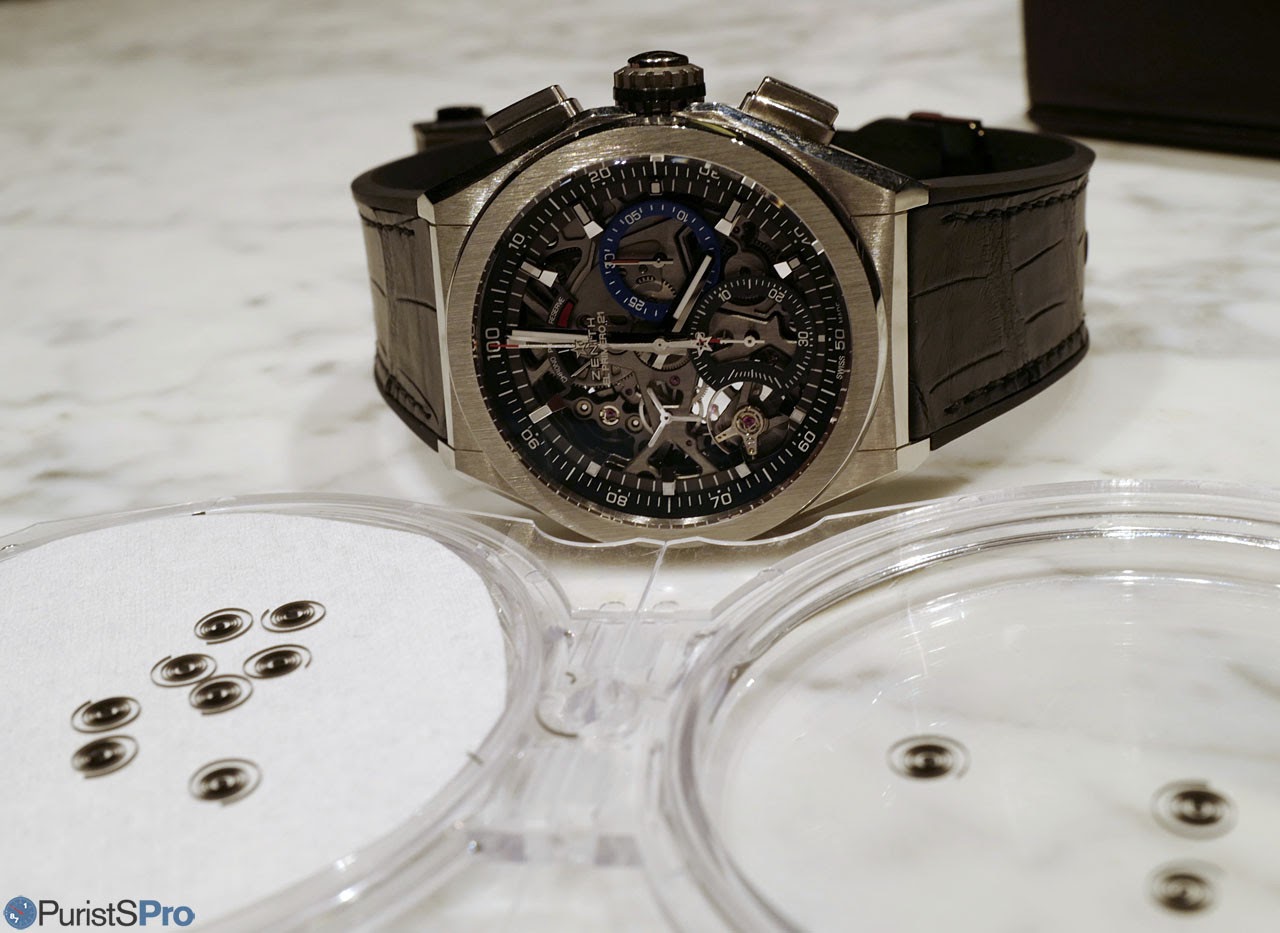
Zenith offers an early preview of where the brand is heading to with the Defy El Primero 21 - discussion with mastermind Guy Semon!

When Zenith presented the Defy El Primero 21 at BaselWorld 2017, not only did it show a new watch to the public, the brand gave more than a hint about how it sees her own future: as a performance-focussed manufacture, a trendsetter in novel materials, while at the same time emphasising robustness and simplification.
PuristSPro sat down with LVMH's resident scientist Guy Semon to discuss details!
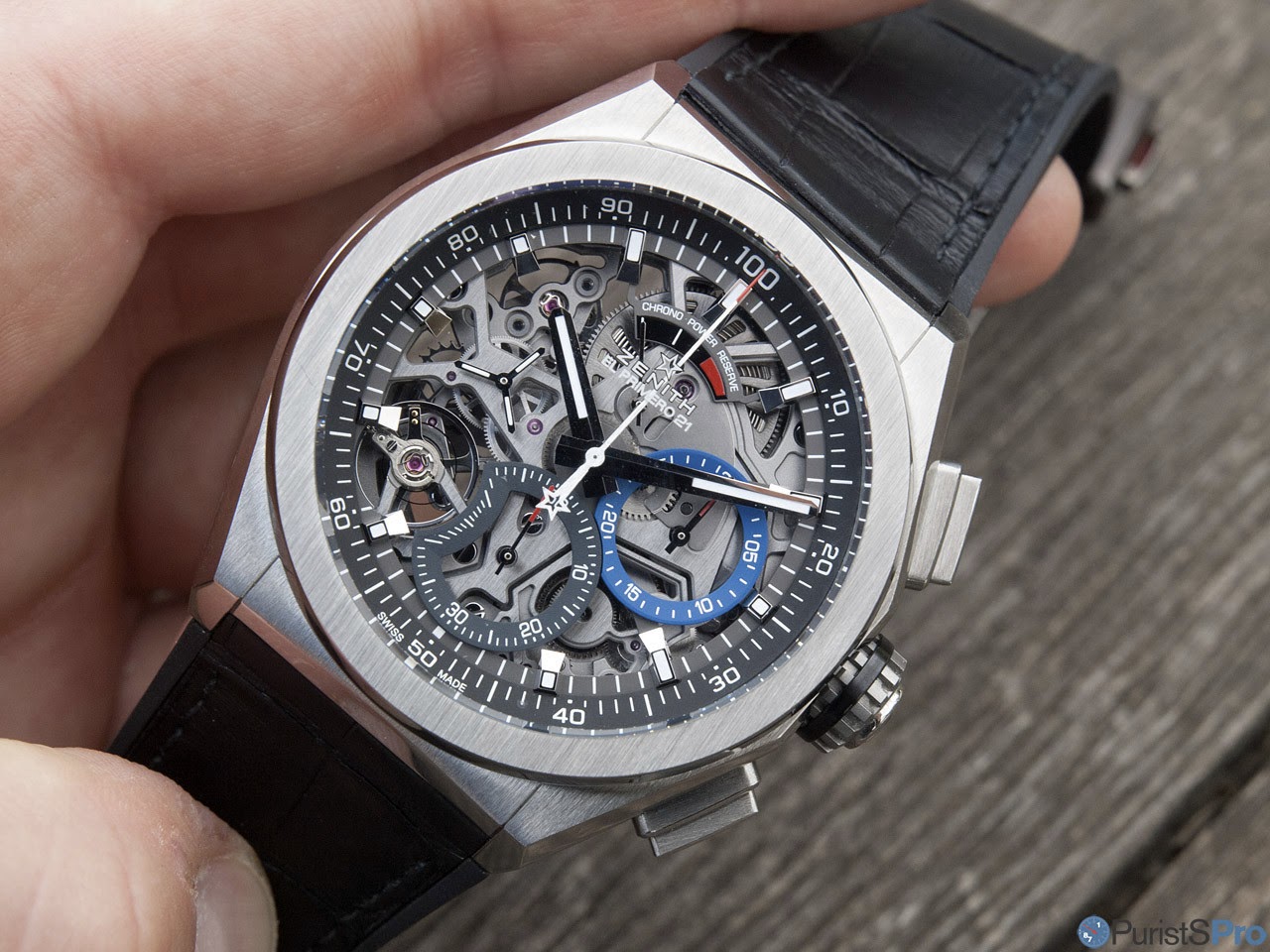
It follows quite logically from the above, that I will cover the design, but more so even the technology with a bit of depth.
1) Design: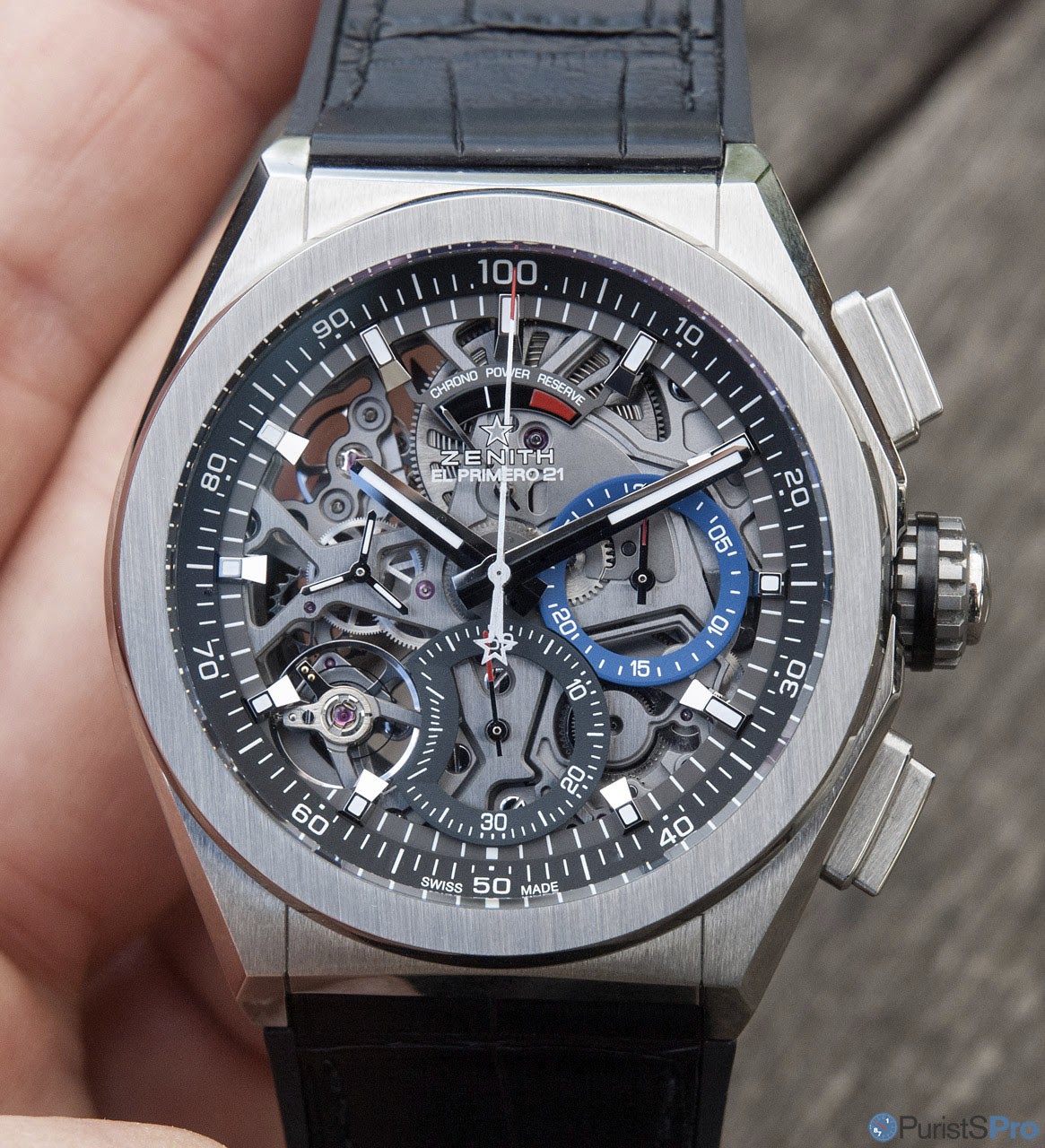
The Zenith Defy comes, essentially, in two versions, a skeletonised one (in both titanium and black ceramics), and a titanium watch with a calmer, solid dial.
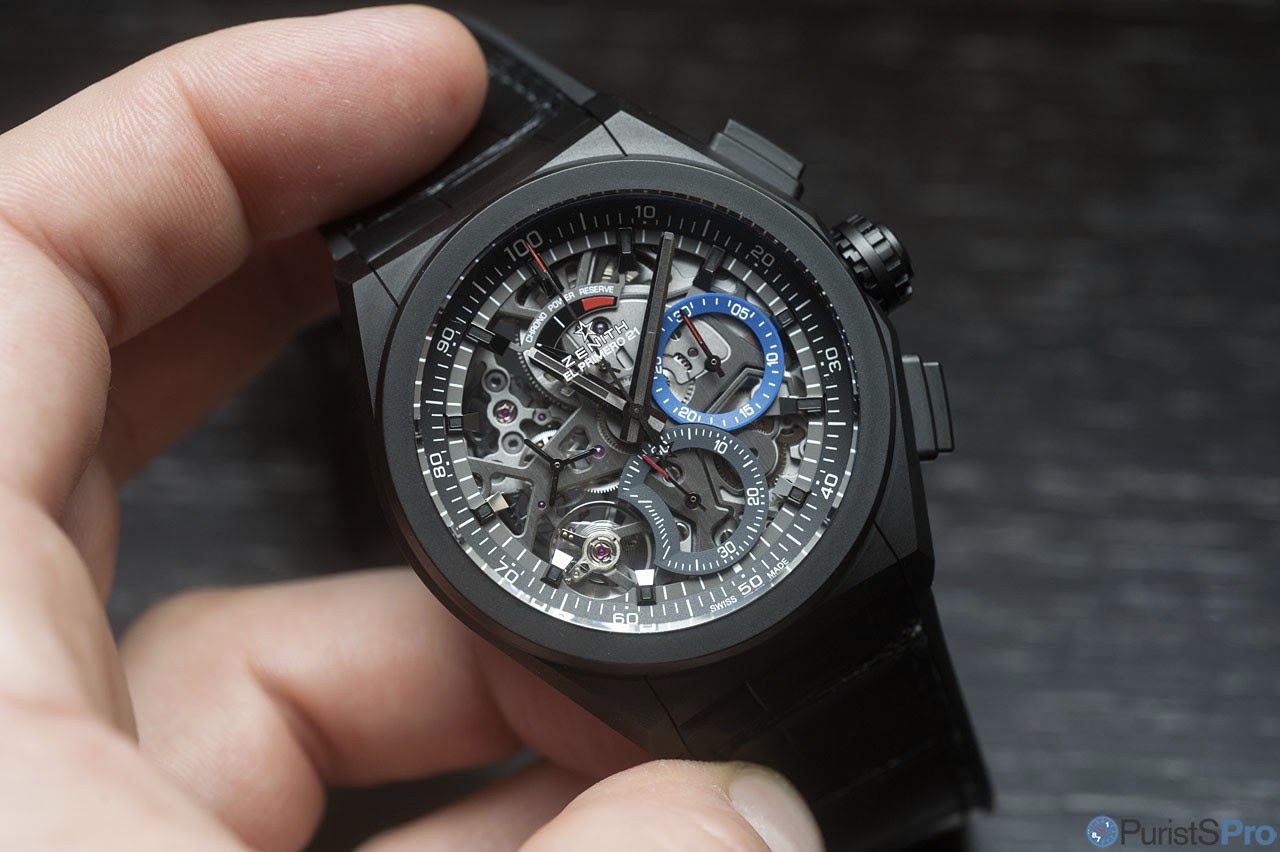
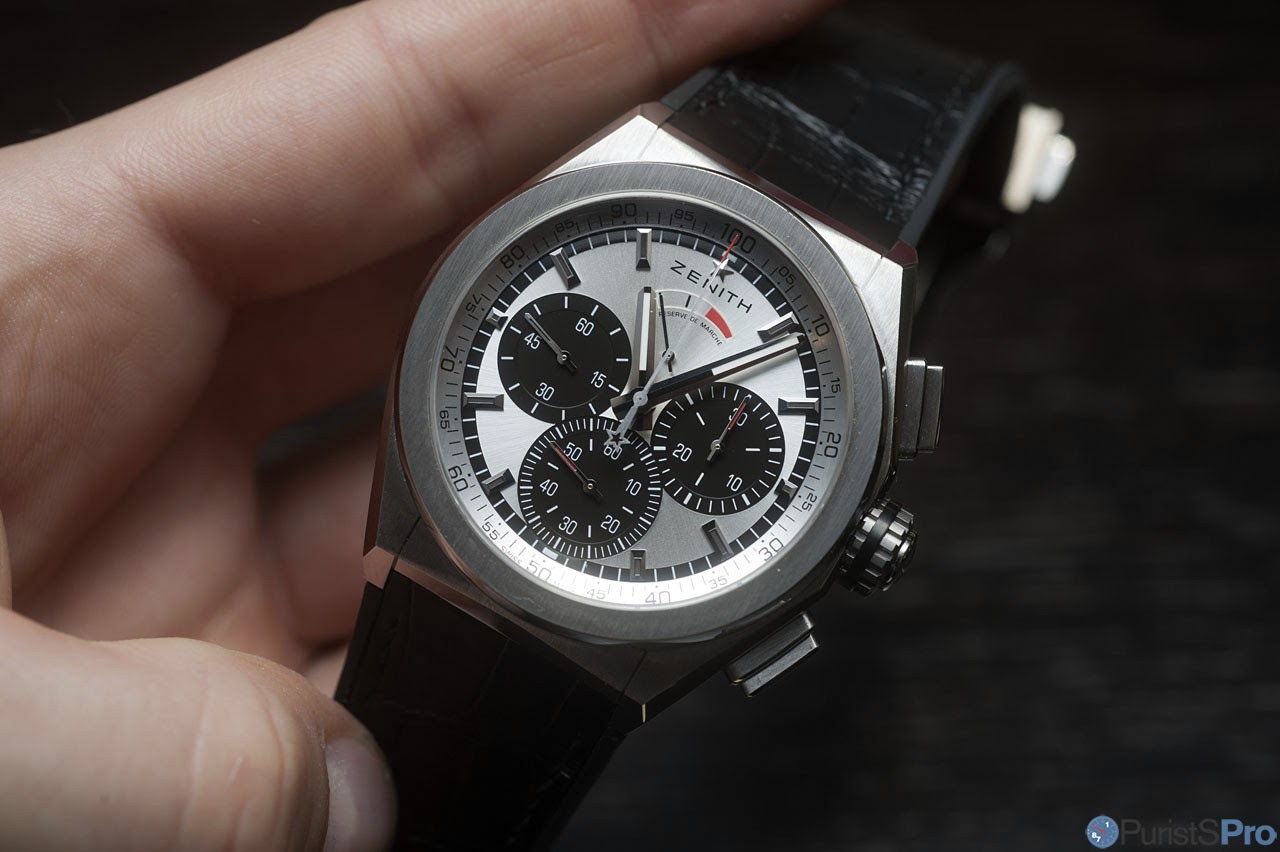
I’ll focus on the former.
First, let’s consider the shape of the case, which has caused a lot of discussion amongst Zenith collectors. A solid trapezoid shape with a round, squarely raised bezel, simple, substantial elements present a robust, solid but essentially ‘this-is-not-love-at-first-sight!’ design. 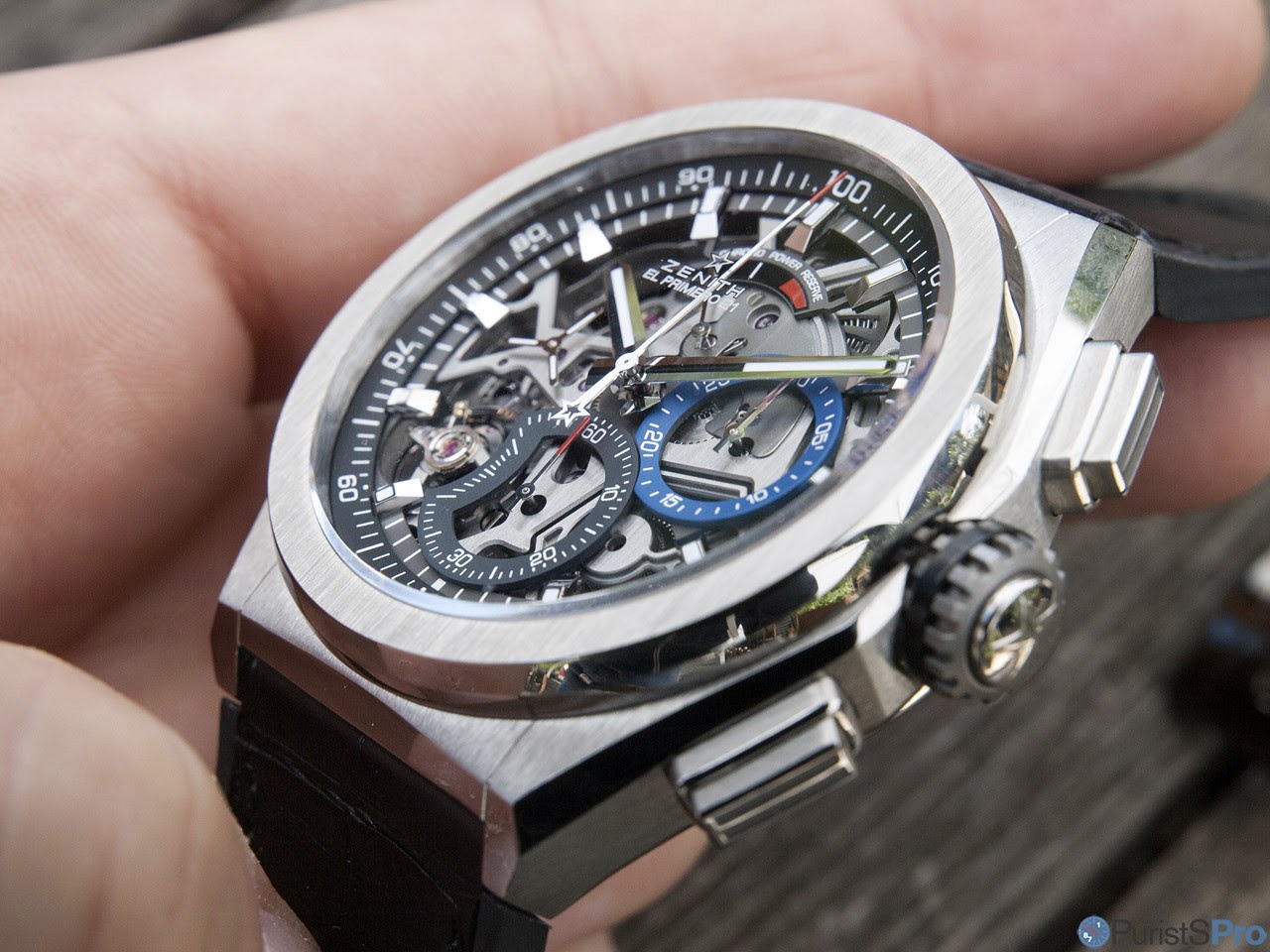
It is, for the Defy, also not necessary, on the contrary, I would propose that this design concept is very apropos for the performance-oriented objective of the Defy collection. If you see all the concept cars, the record breaking machines on wheels - you rarely see objective beauty, you mostly meet aesthetics that are fit for purpose, not more.
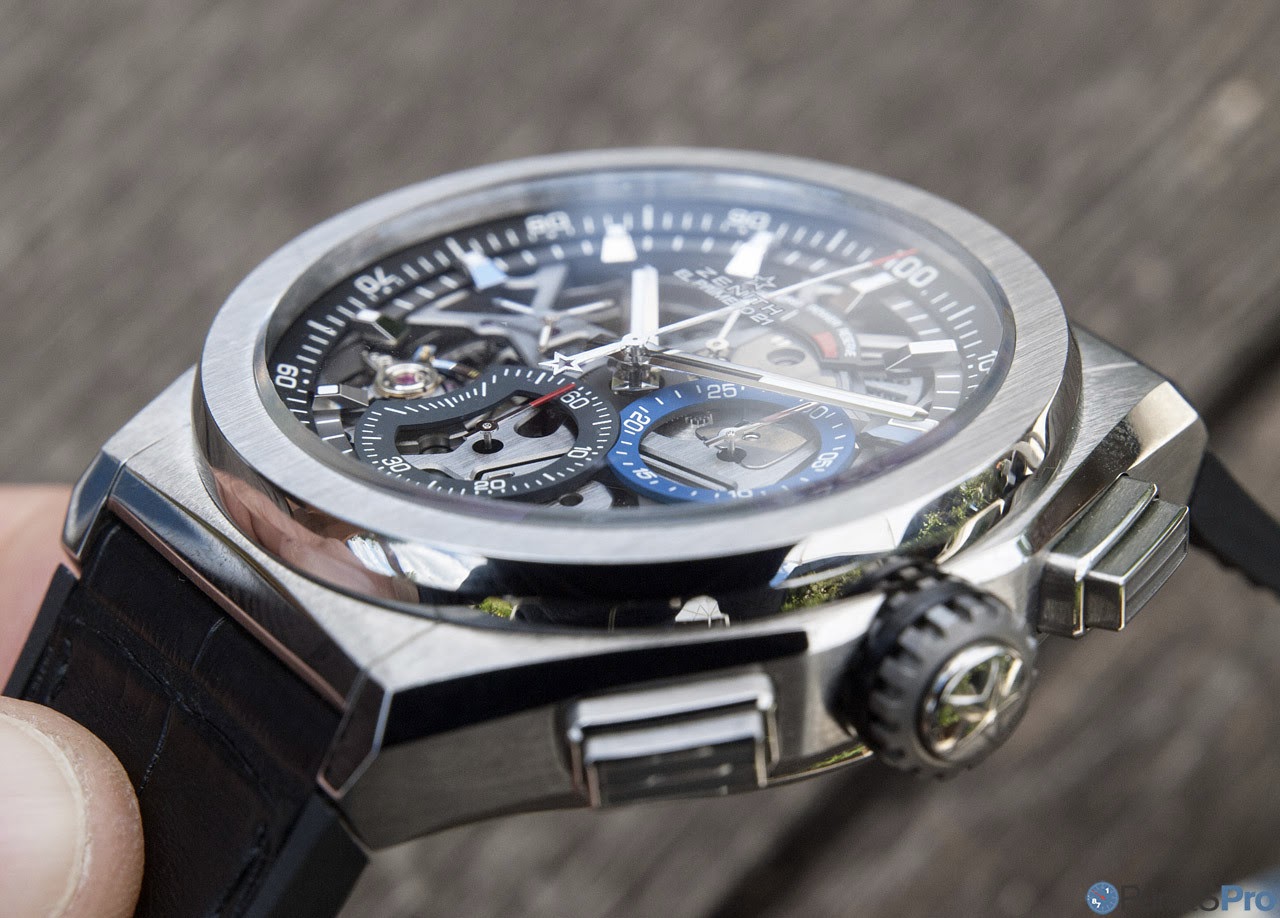
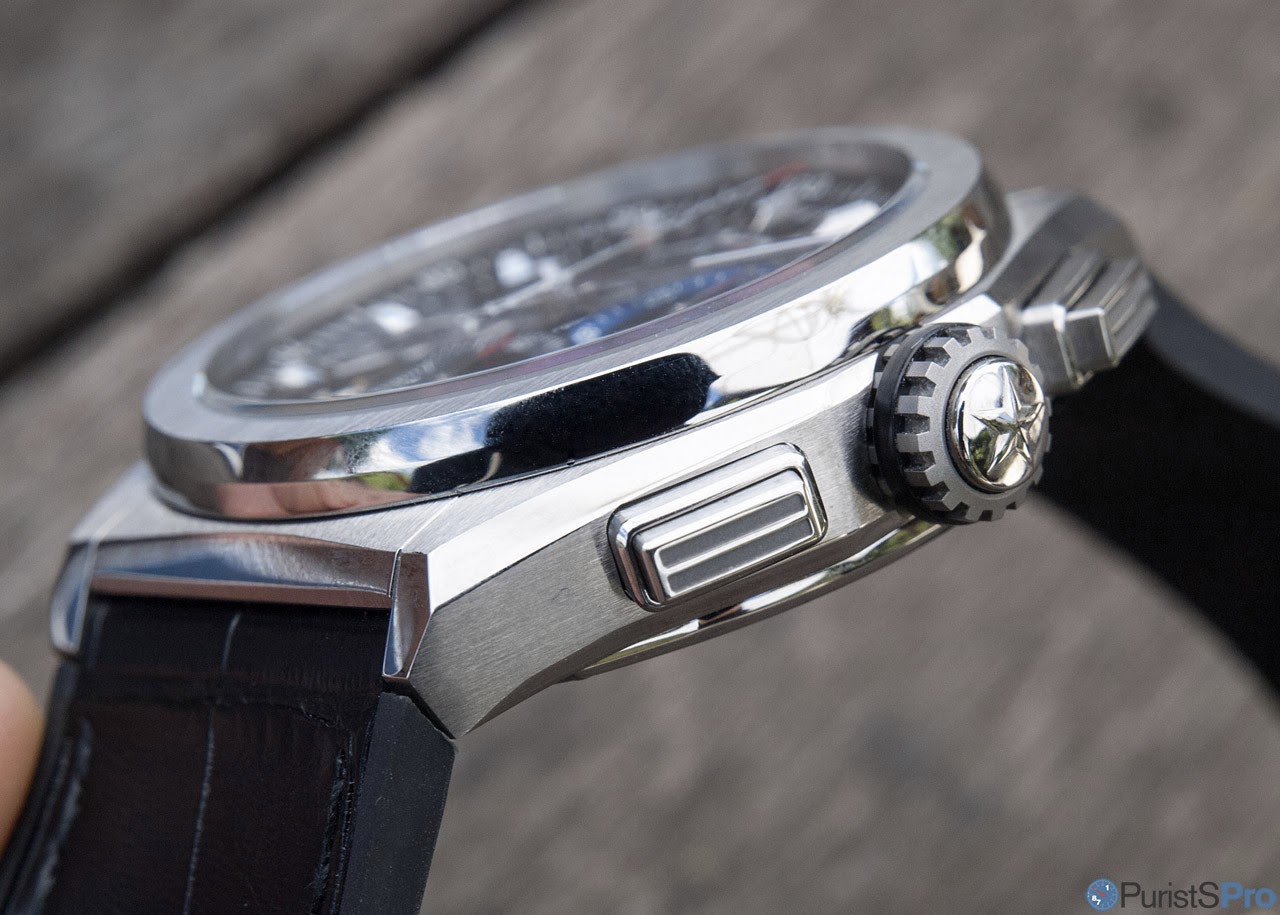
Furthermore, look back into the distant and recent history of the brand, Zenith used the ‘Defy’ for their more bold, ‘out there’ designs. For illustration, I’d like to mention two vintage Defy watches, which essentially represent an early instance of the exact same design prerogative applied in the new Defy (look at the case shape, and the bezel). Back in the day, the Defy was also equipped with fast beating movements; in other words, Defy was already a carrier and test-bed of technology.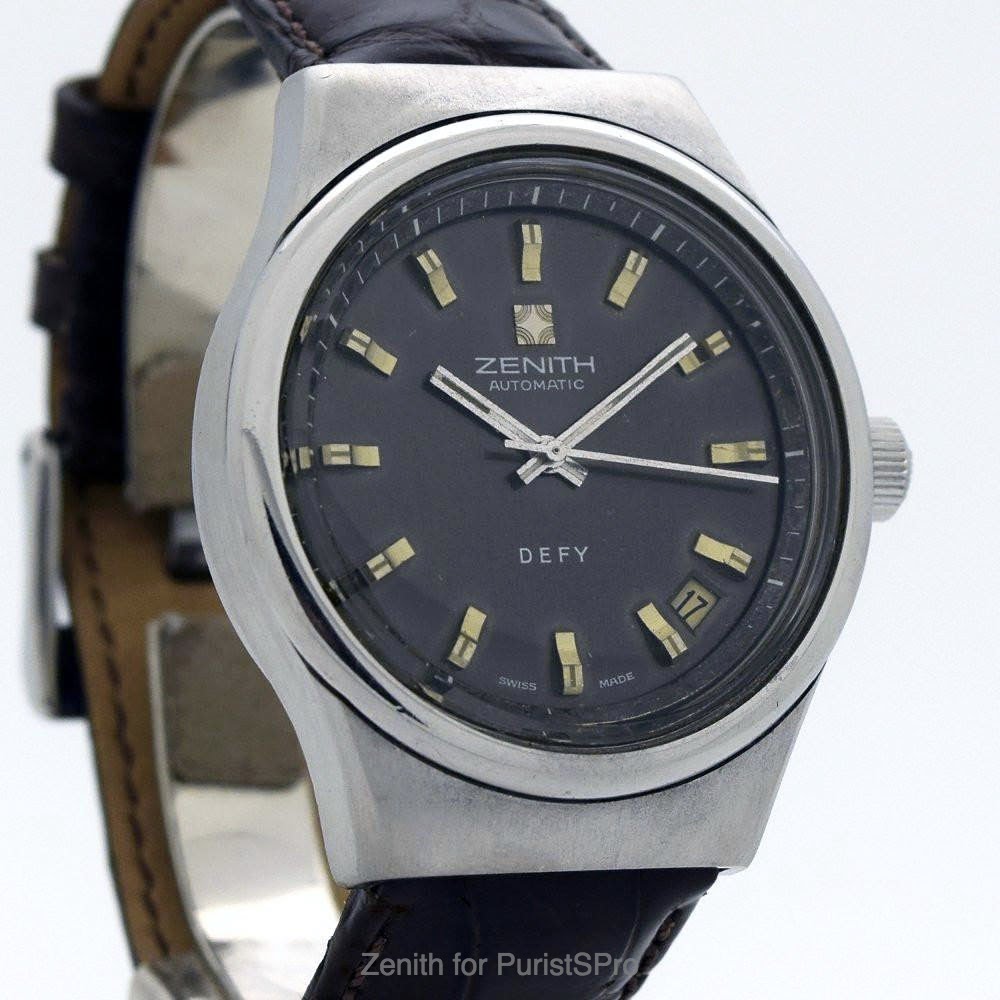
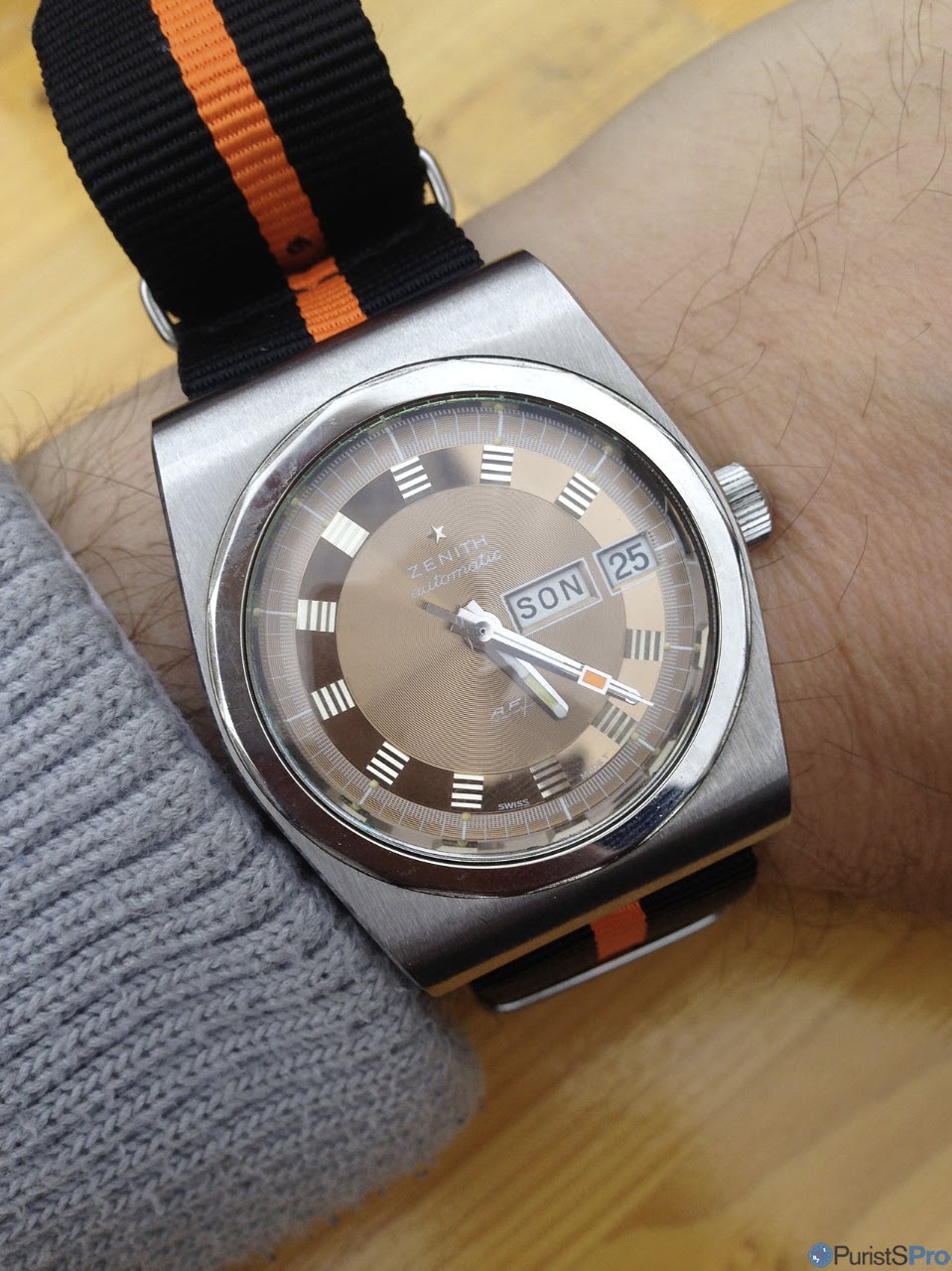
More recently, under the infamous but sales worthy era of Mr Nataf, Defy again stood for extreme designs. Many argue that those designs are far off a ‘Zenith identity’, but given context, I think they had their place in the lineup.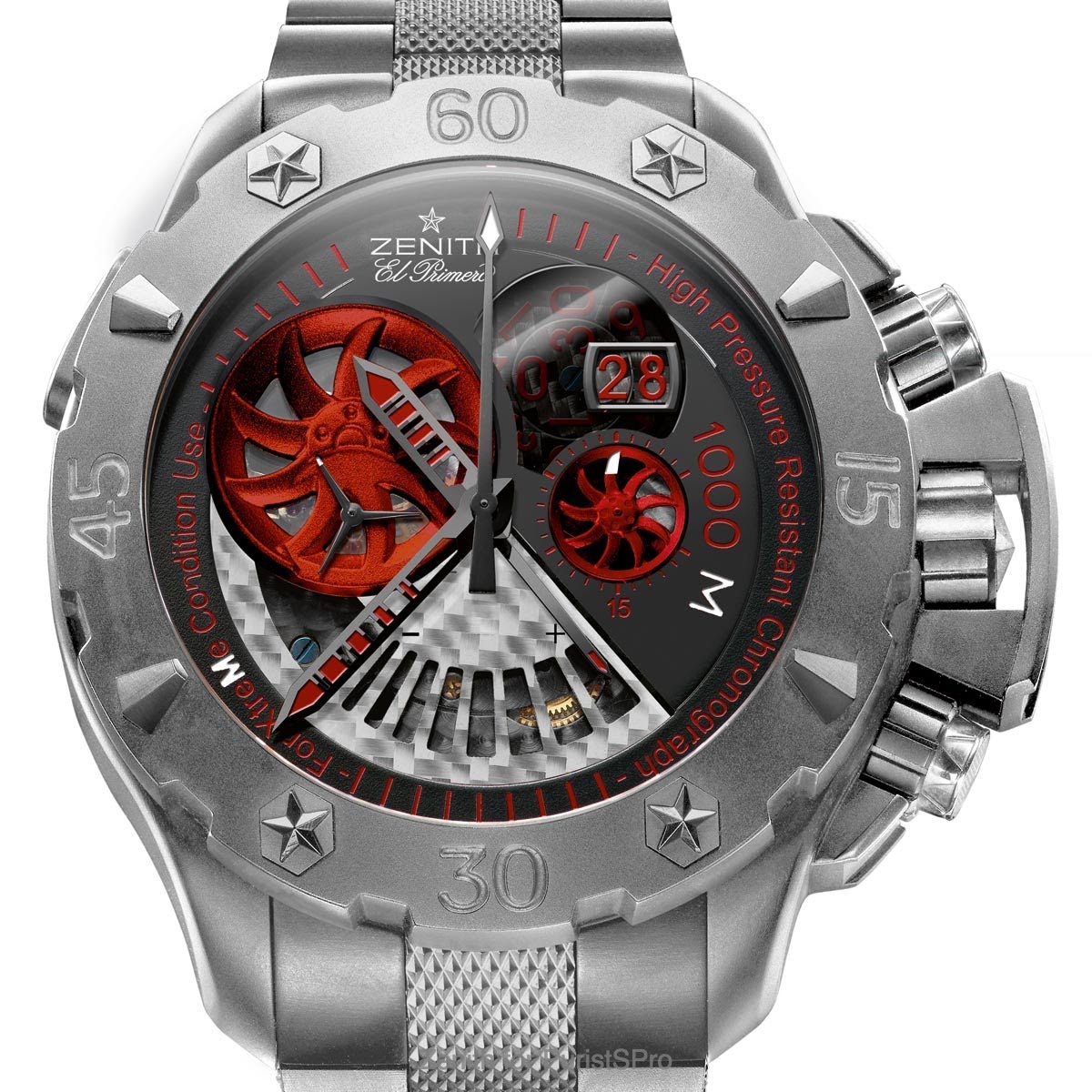
With the new Defy El Primero 21 the circle closes. I chose to show the skeletonised variant for a very simple reason: to showcase the new Zenith Cal. 9004, with its separate 360.000 VpH chronograph geartrain and the fantastic achievement Zenith has made in terms of composite materials. This movement needs to be seen from the dial side as well!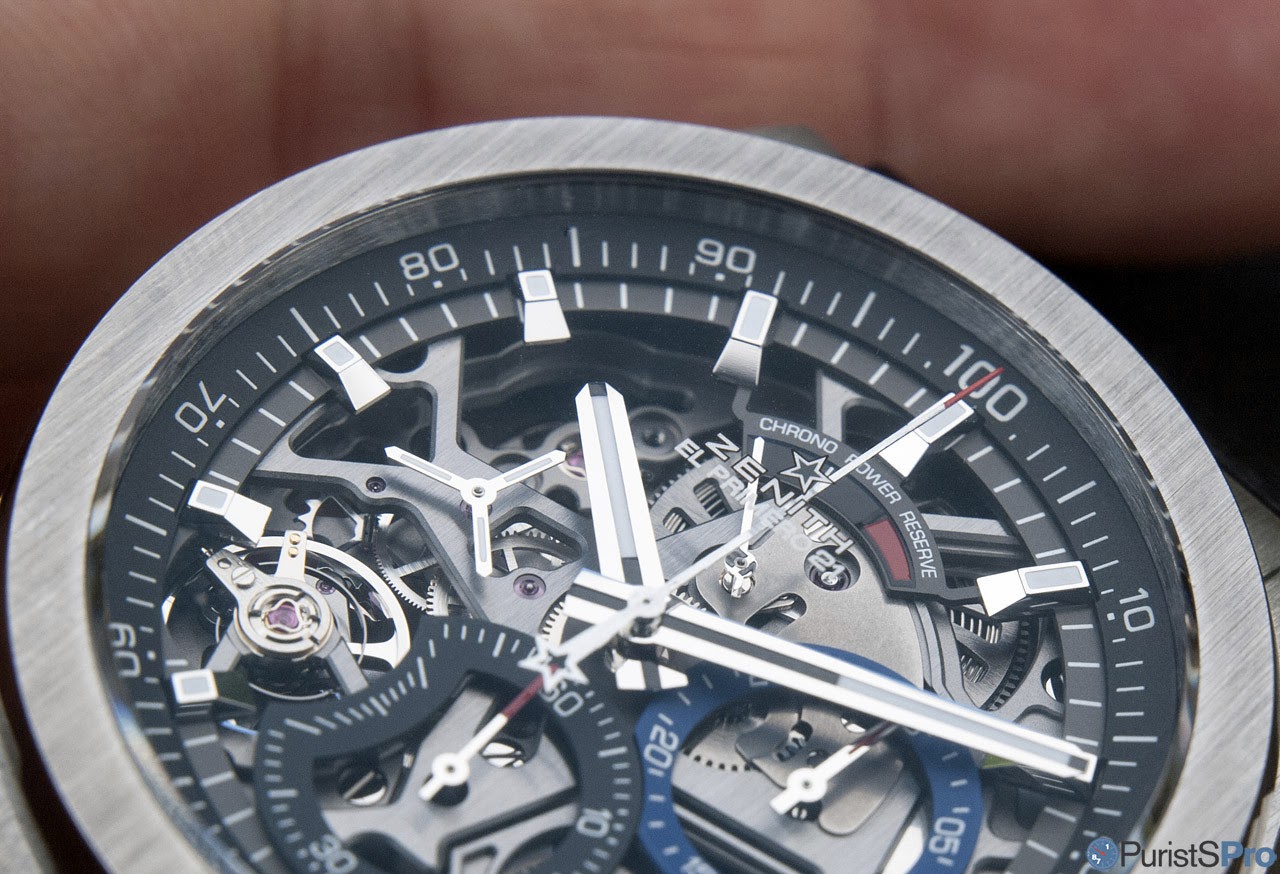
Zenith opted for a very machine-like attempt at skeletonisation, with rather simple, long and straight edges, allowing for economical production. Again, I think this is a perfect match for a tool-watch.
Legibility is very good, thanks to the colour-coded subdials and red tips on the chronograph hands (in a figurative sense this also hints at the separate chronograph works, but considering how difficult watch designers find it is to create technically correct chronograph dials, I doubt that’s intentional  ).
).
Apart from that, the dial is free of a logo (that is vaporised on the inner side of the crystal), but sports a power reserve for the chronograph mainspring.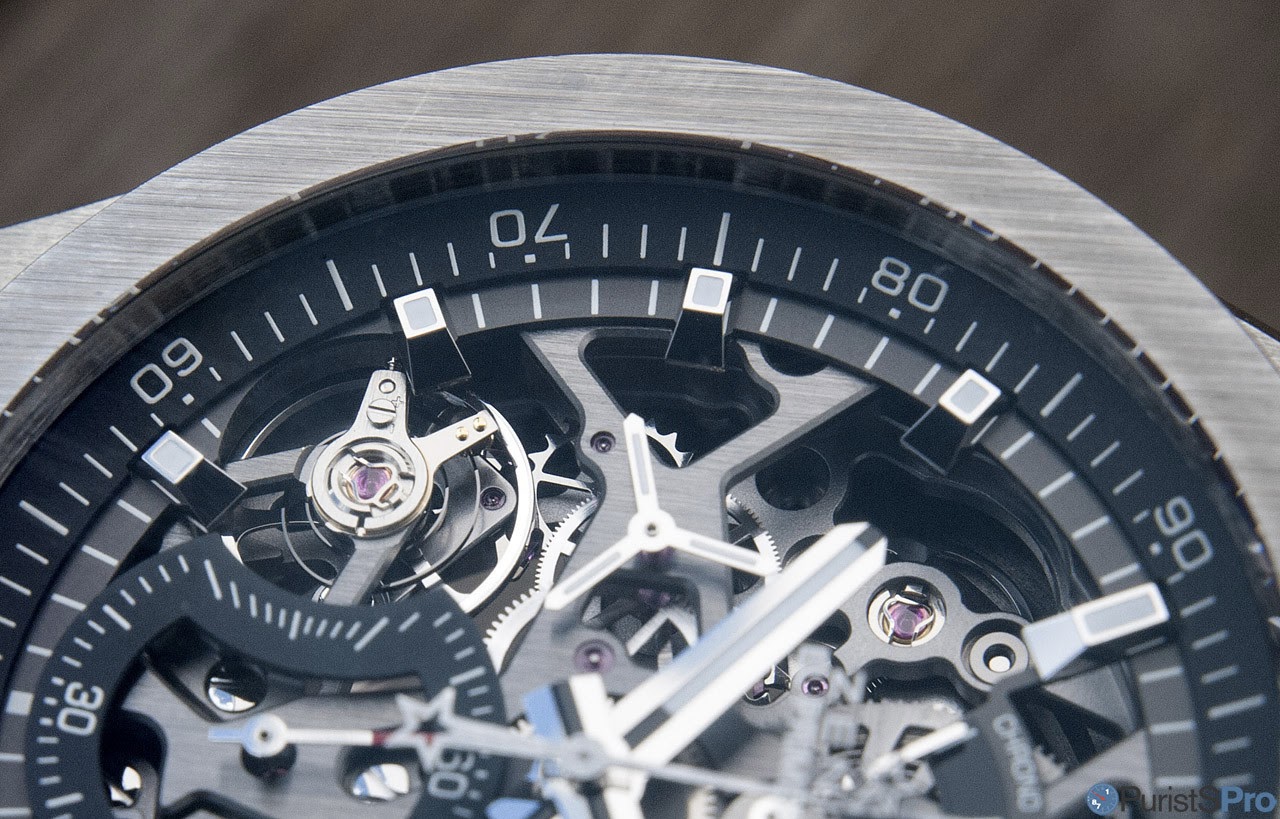
Why is that? Yes, although the main movement is automatic, the chronograph train needs be wound by hand.
The power reserves are 50h (going train) and about 55min (chronograph train), thus alluding to the power hunger of a (very) fast escapement.
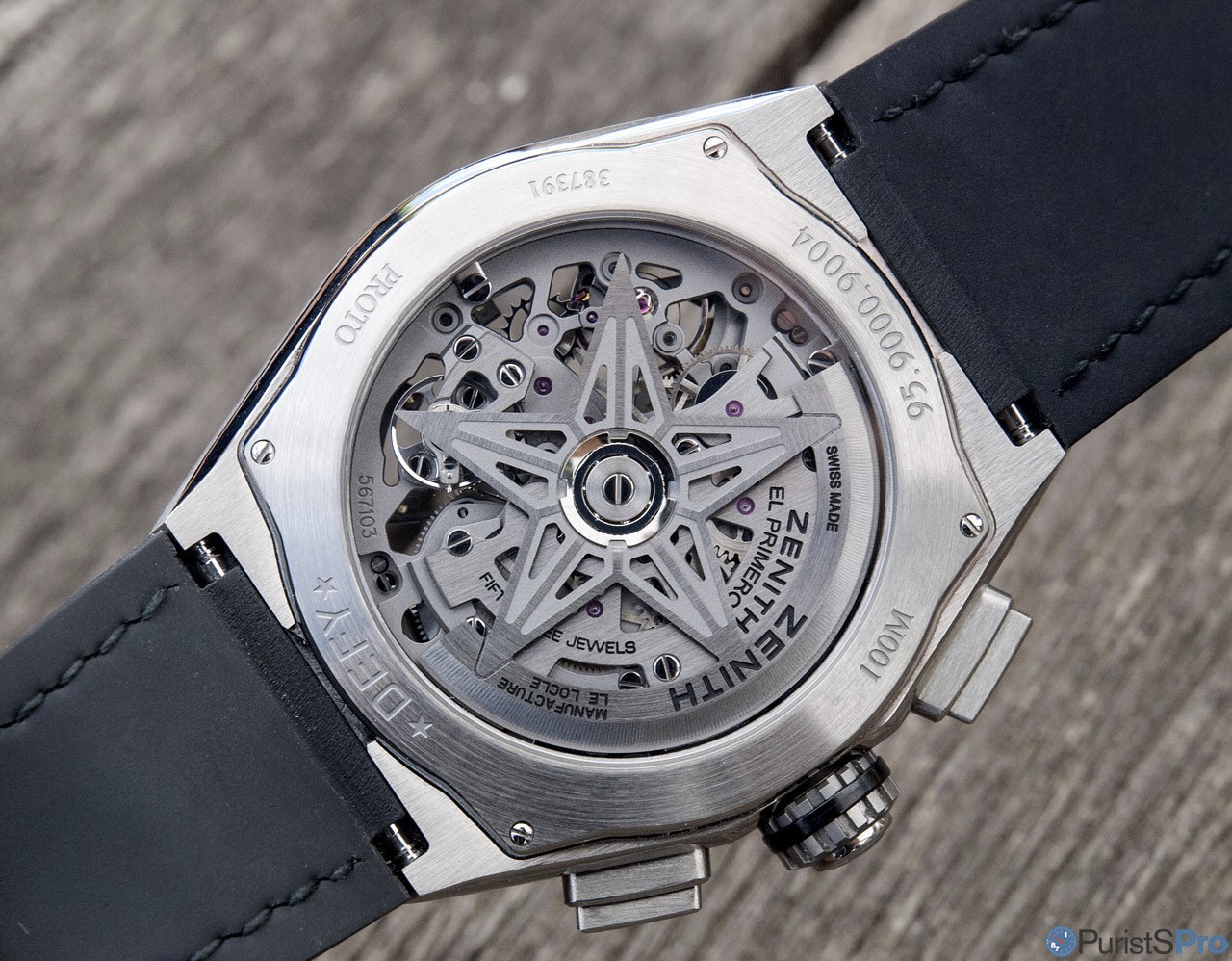
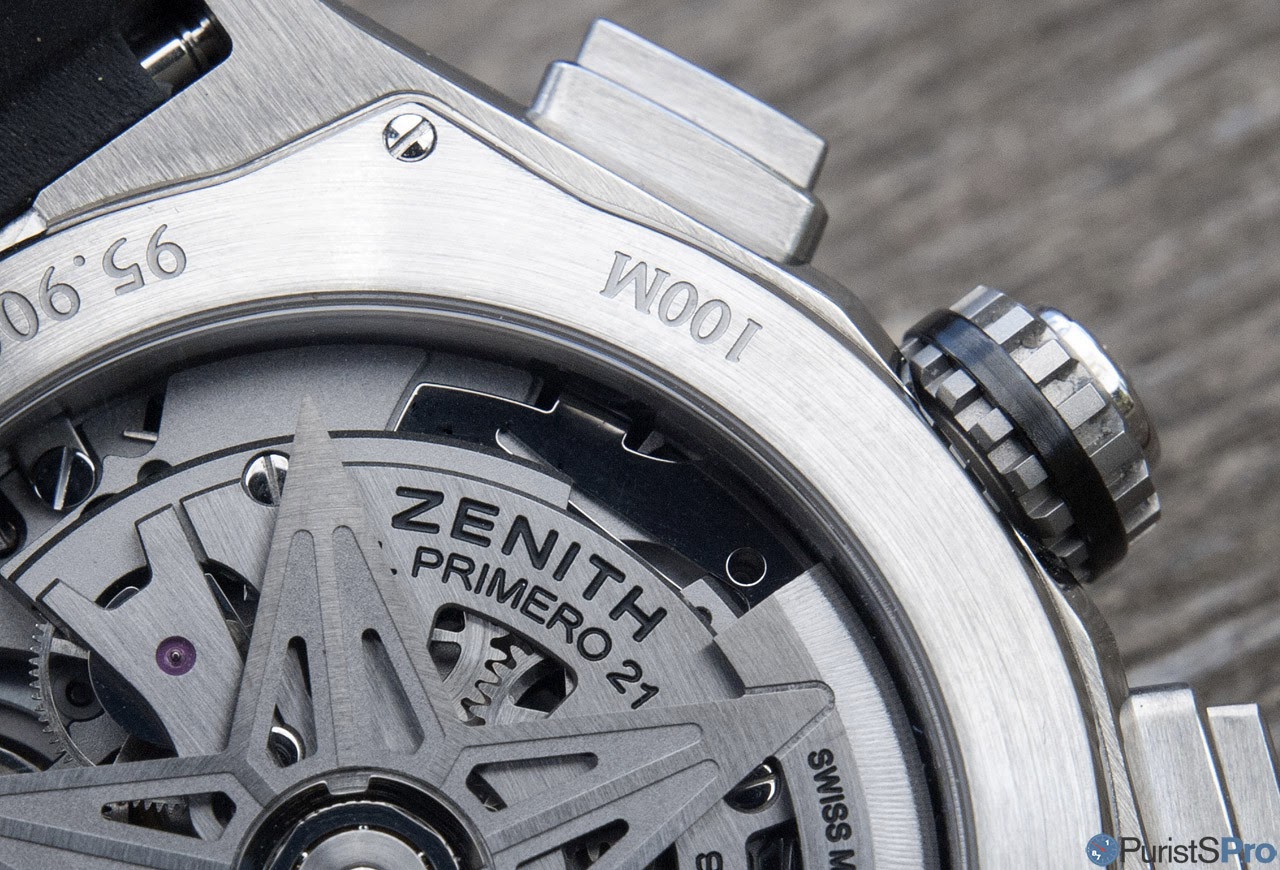
2.) The Technology:
The calibre has a decidedly modern architecture (one would expect this
knowing Jean-Claude Biver...) with a lot of straight lines and
apparently modular bridges (note the image has an exposure of about...
guess it? 1/2" a second if you count the jumps of the 1/100 seconds
counter: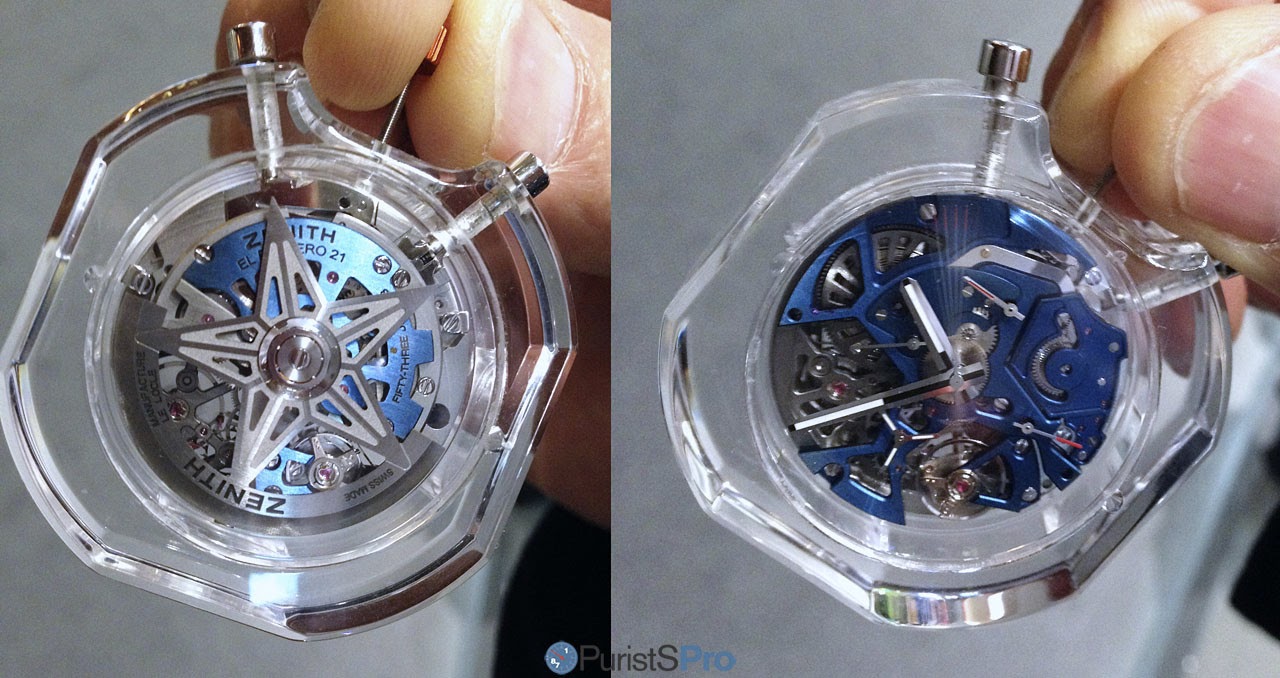
That already is the most obvious feature of the Defy El Primero 21, and its Cal. El Primero 9004, the fast chronograph counter accomplishing a full turn within 60 seconds, thus measuring 1/100 sec, thanks to a separate going train all down to its own mainspring barrel. That one feeds a dedicated escapement (to the left on above image) with a balance beating at 360.000 Hz:
To elucidate how this mechanism could deliver more precise timekeeping, more resilience towards environmental influences and at the same time greater reliability and less cost of production, I had an intensive discussion with Guy Semon, head of LVMH's science lab, a rather unusual executive in contemporary watchmaking: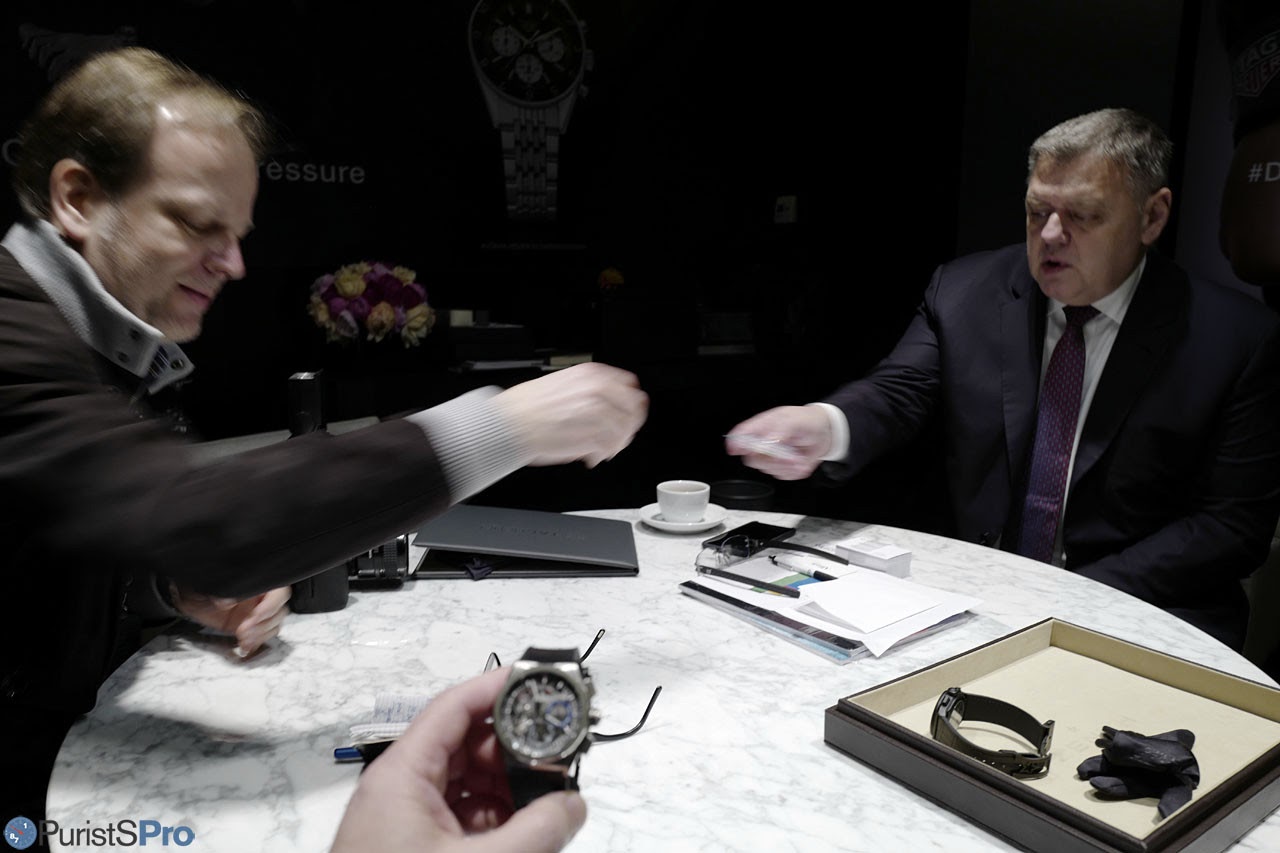
Mr Semon is a remarkable person by all accounts, and with a very unusual past for the watch industry:
After starting as a jet pilot with the French Navy, he followed his curiosity for science as a researcher at the French Ministry for Research, more precisely at the University of Franche-Comté in Besançon working on energy questions. He holds a doctorate in physics and engineering science.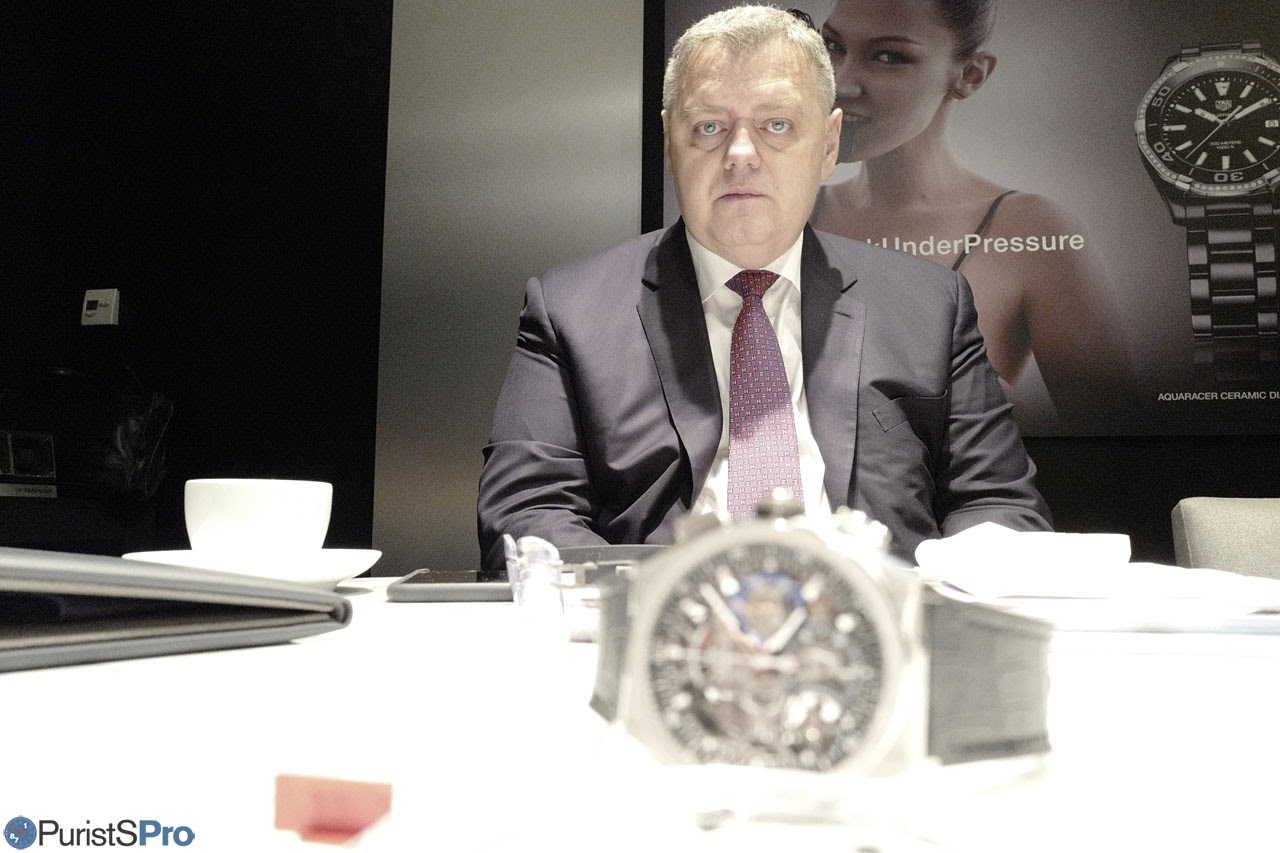
Subsequently, Semon set up his own engineering firm specialising on such diverse tasks like constructing new generation high-speed trains, gas turbines and hybrid armoured vehicles, with many of the contracts for the French Air Force. He further diversified on operating large scale parallel computer and high speed telecommunications systems as well as a flying business, before he was called by Jean-Claude Biver as General Manager of TAG Heuer three years ago.
But back to the EP 21: 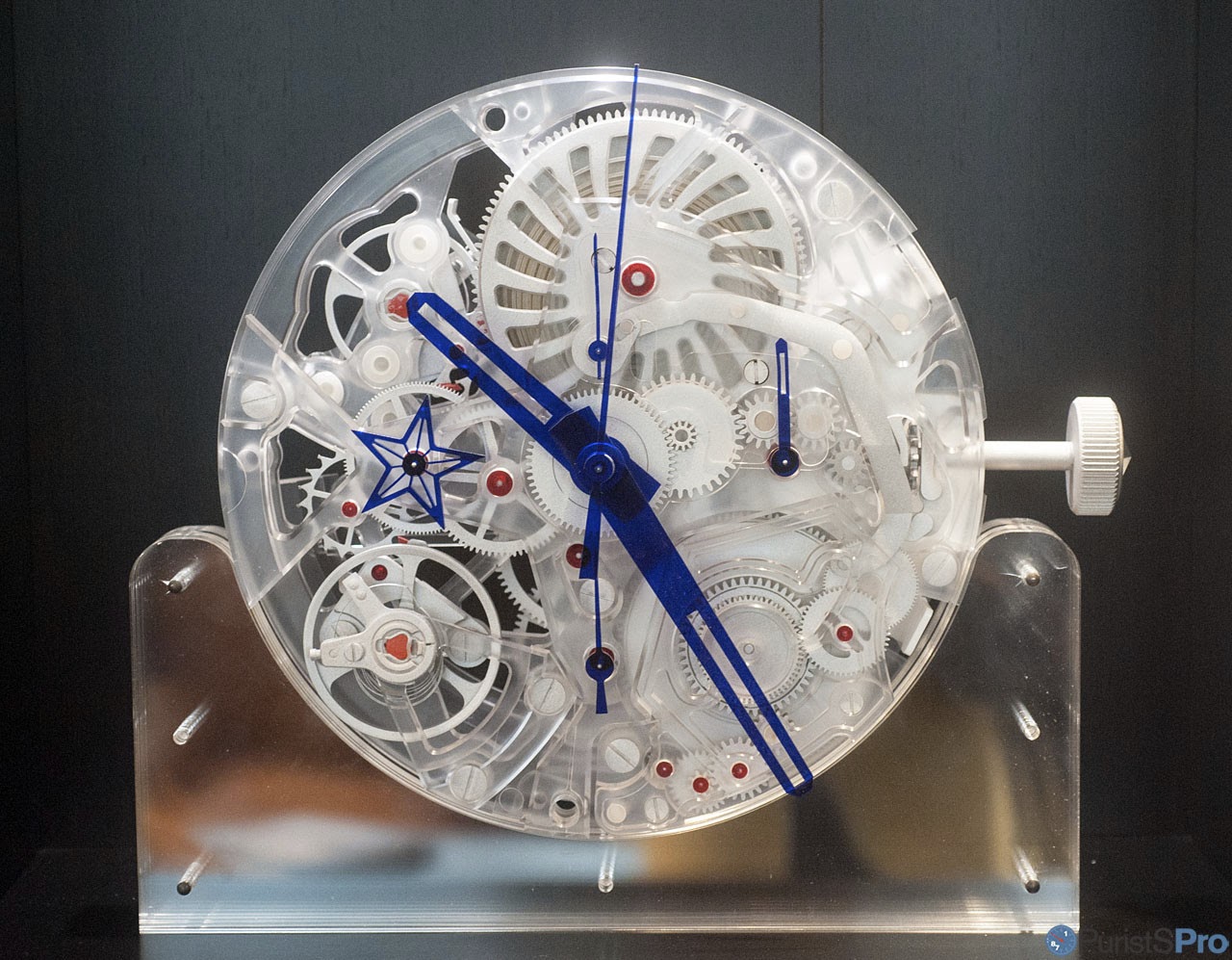
First, let’s discuss why the watch needs two power trains instead of one. Well, there are two reasons for it: the first one is simplicity: a clutch is an additional mechanisms which needs to be adjusted and is prone to repairs.
The second one is that of chronometry: With a chronograph geartrain separate from the going train, the activation of the chronograph cannot influence the timekeeping, as start/stop cannot influence the balance of the going train, and also no additional power is drawn when the chronograph is activated. This also facilitates regulation.
For this reason, the COSC certification of the movement is valid regardless whether the chronograph is active or not (hint: a chronograph is usually COSC certified only in its inactive state).
In stark contrast to the famous El Primero Cal. 400 (and its derivatives), the chronograph is not operated by a column wheel. Instead, Zenith opted for a cam. the reasons for this are that a cam is much slimmer to realise and does not occupy that much space. Many watchlovers will be disappointed, but again, given the performance-centric conception behind the Cal. 9004, it actually makes sense.
In any case, what really is surprising is that Zenith managed to reduce the number of components from 326 (El Primero 400B) down to 293 (El Primero 9004), a solid 10% reduction in parts count despite two separate drive trains.
But the real interesting features is hidden here: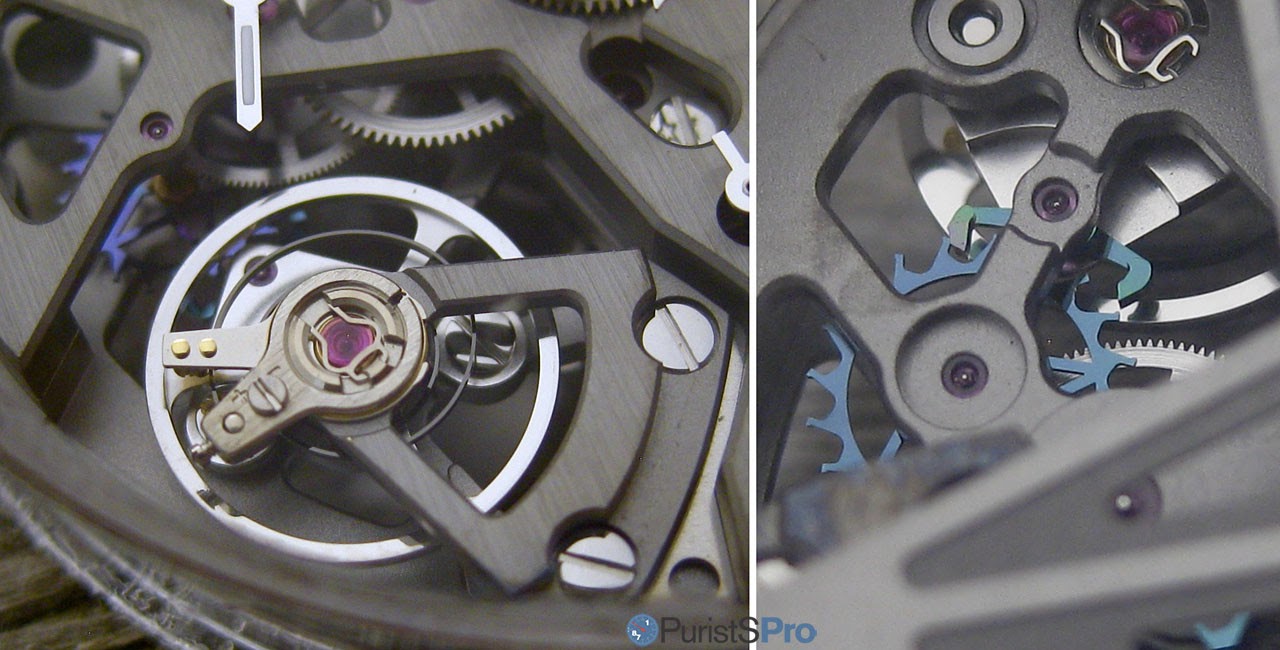
Zenith’s new spiral which for the first time is made out of a novel composite developed by the LVMH scientific research team headed by Guy Semon. 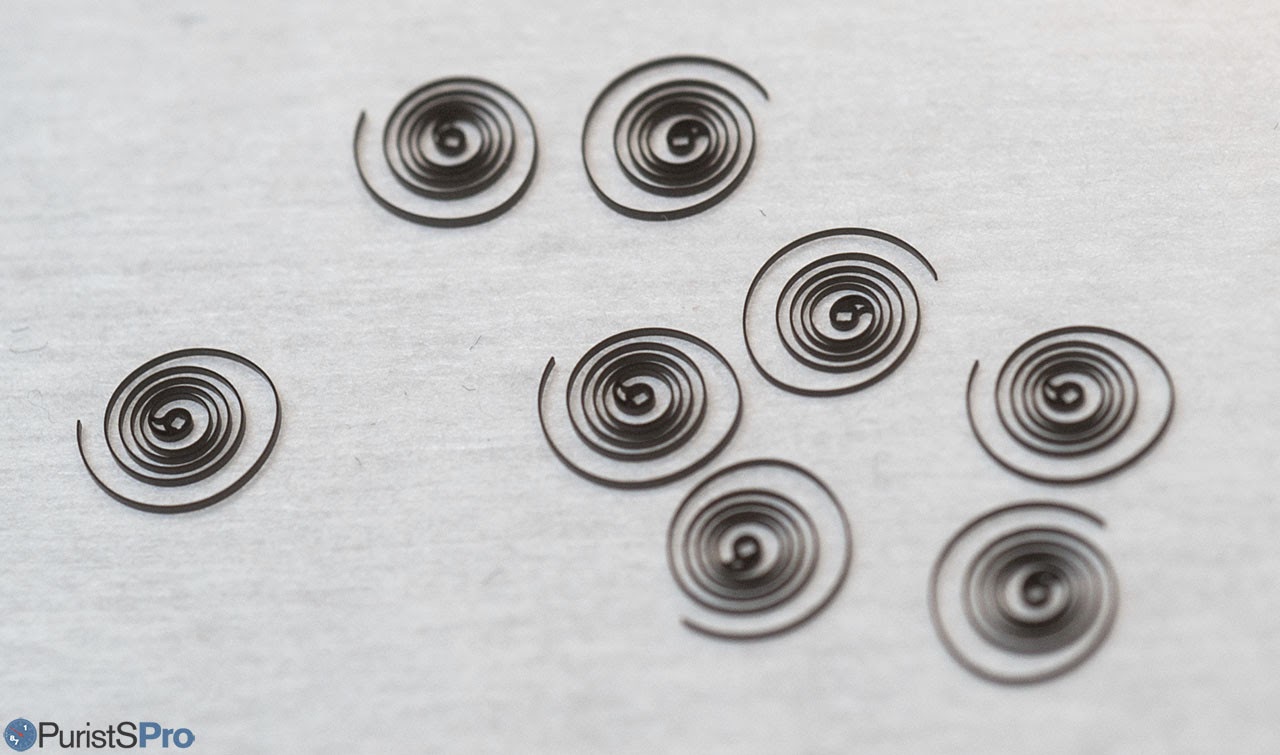
For the first time in watchmaking history, a carbon nanotube carbon composite was used to create a spiral. The material is very light, thus gravity has little influence on the rate of a watch. It is also non-magnetic and not sensitive to variations in temperature.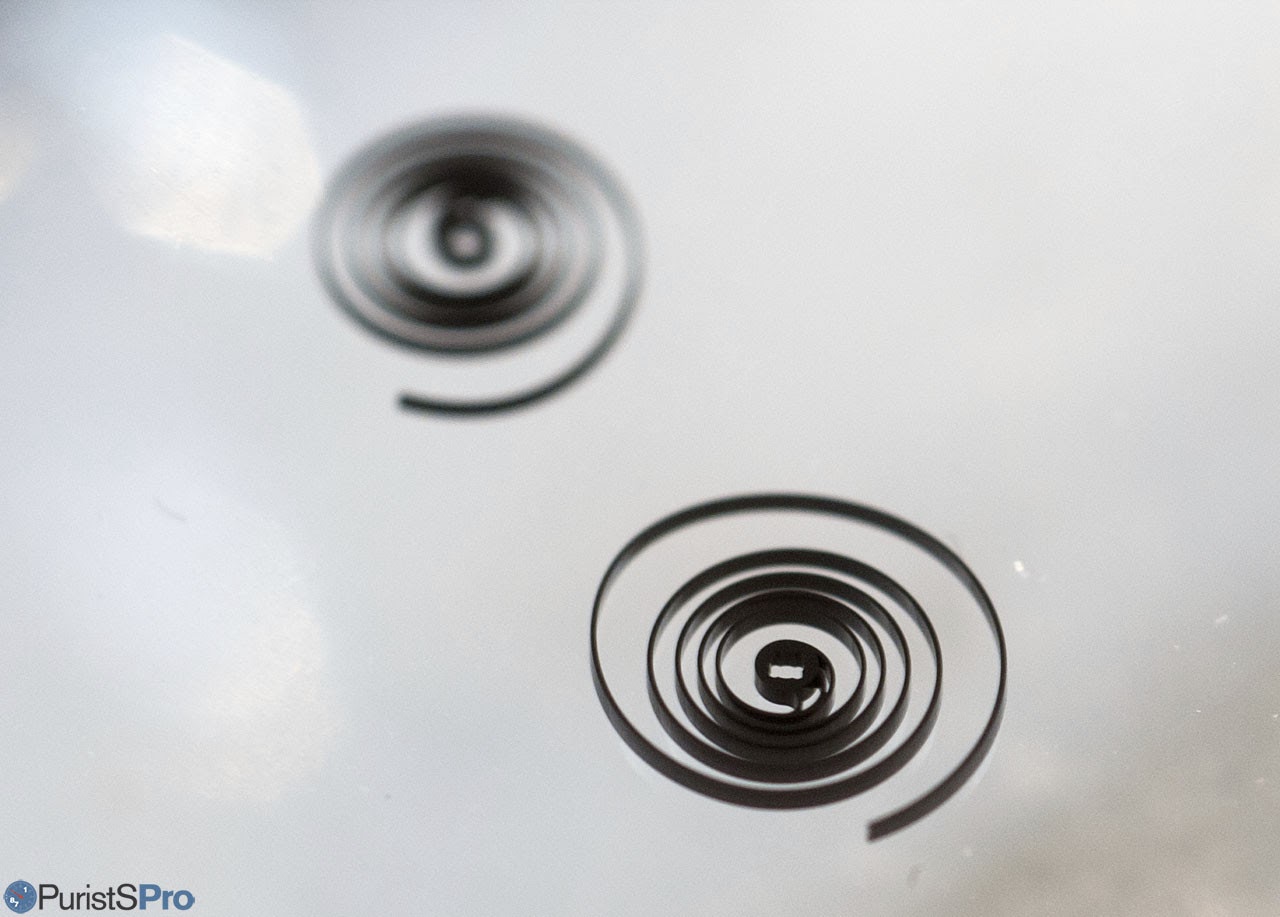
One striking characteristic of this new material lies its astounding ability in elastic deformation, measured by the Young’s Modulus. The elasticity value for the new Zenith spiral is about 4 gigapascals (GPa or kN/mm2), the lowest of any spiral materials used to far.
For comparison, Nylon has about 2-4 GPa, MDF is 4 GPa, glass is between 50 and 90 GPa, brass is between 100–125 GPa and steel is measured at about 209 GPa.
This high elasticity makes it for an ideal balance spring material.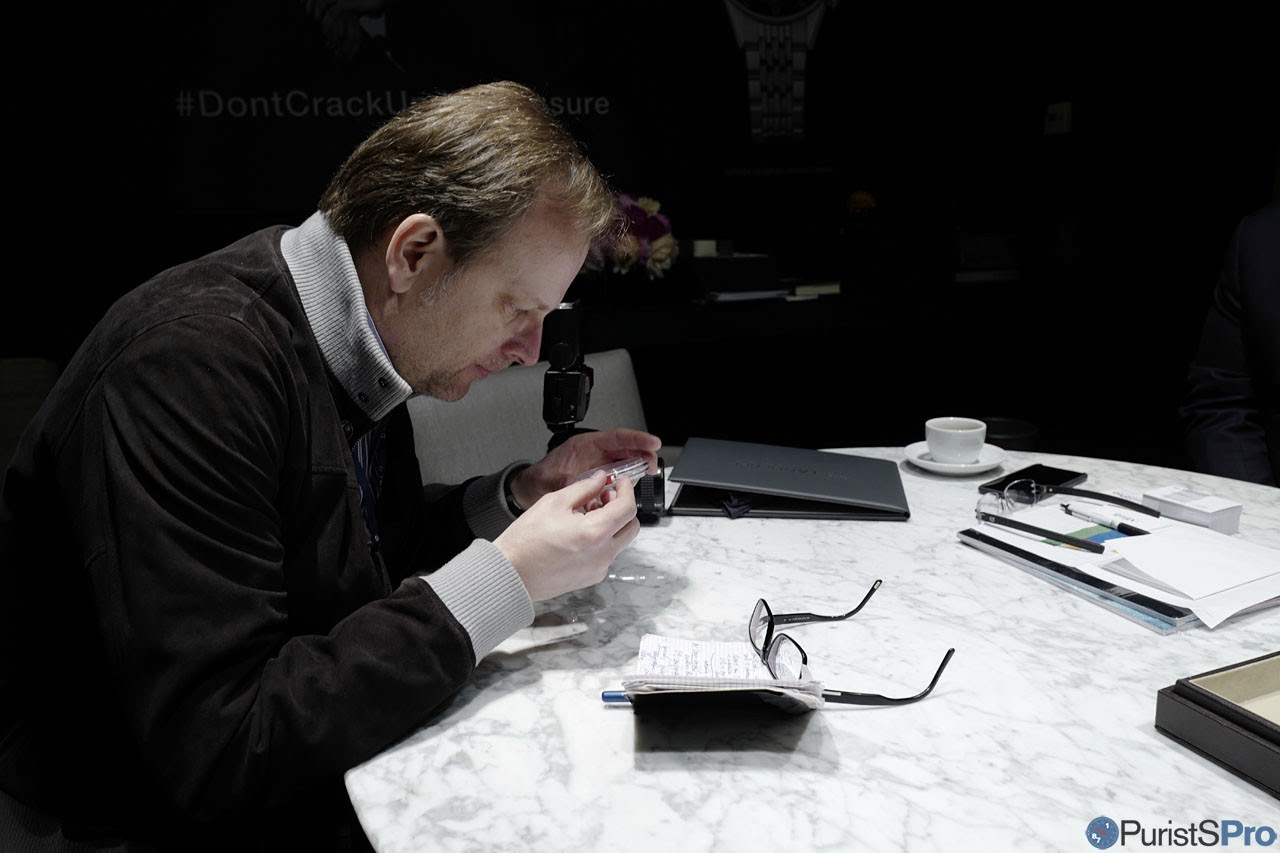
Moreover, the new composite comes with economies of scale in production, as 350 spirals can be produced on one wafer, all with final geometry ready
to be assembled. Practically, the shape of the spiral is coated onto
the wafer with iron, upon which, in a sequence of chemical reactions,
nanotubes with a diameter of 10 Å are grown into a 3-D structure. At a
96% vacuum, the carbon rising then infiltrates the tubes and builds up
the composite.
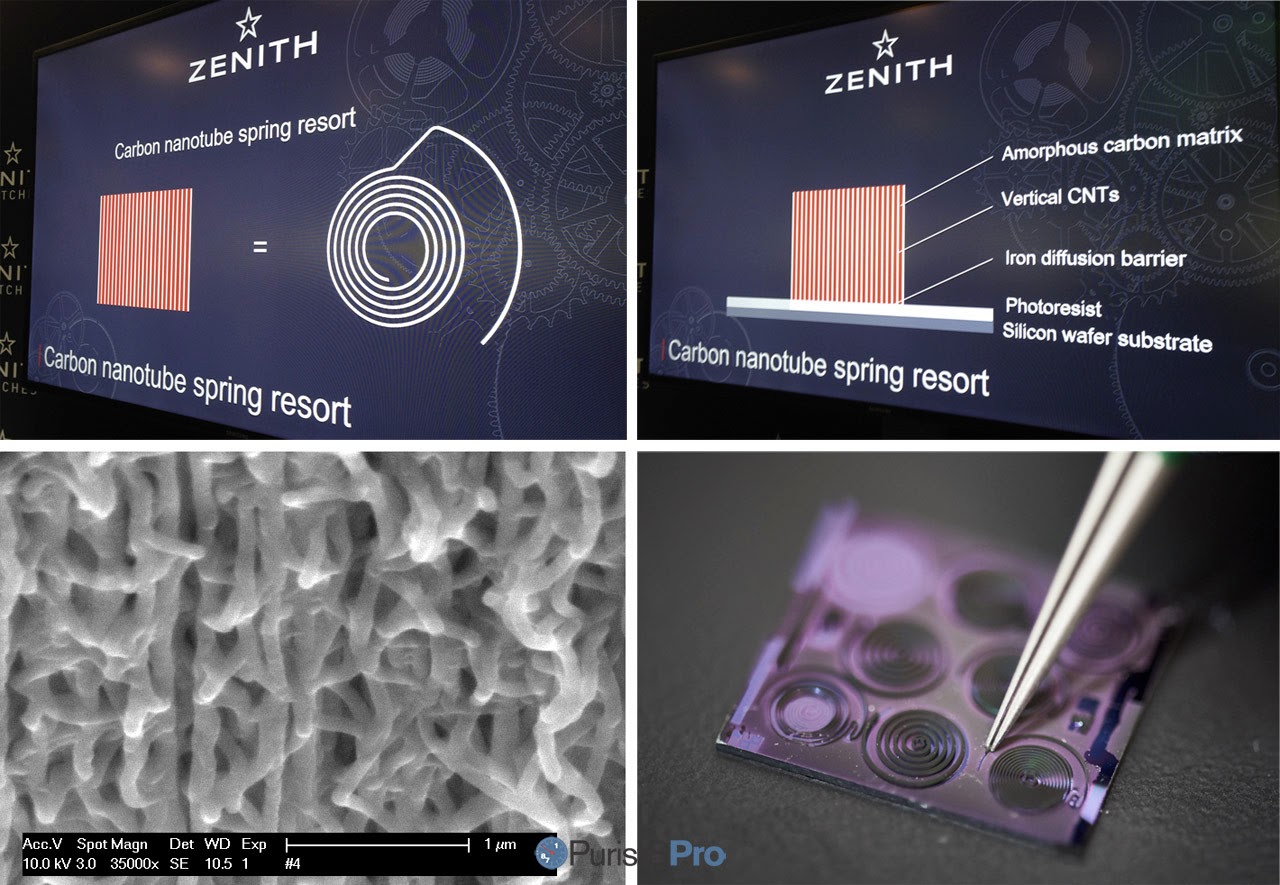
It is actually the first 3-D carbon nanotube carbon composite structure ever realised!
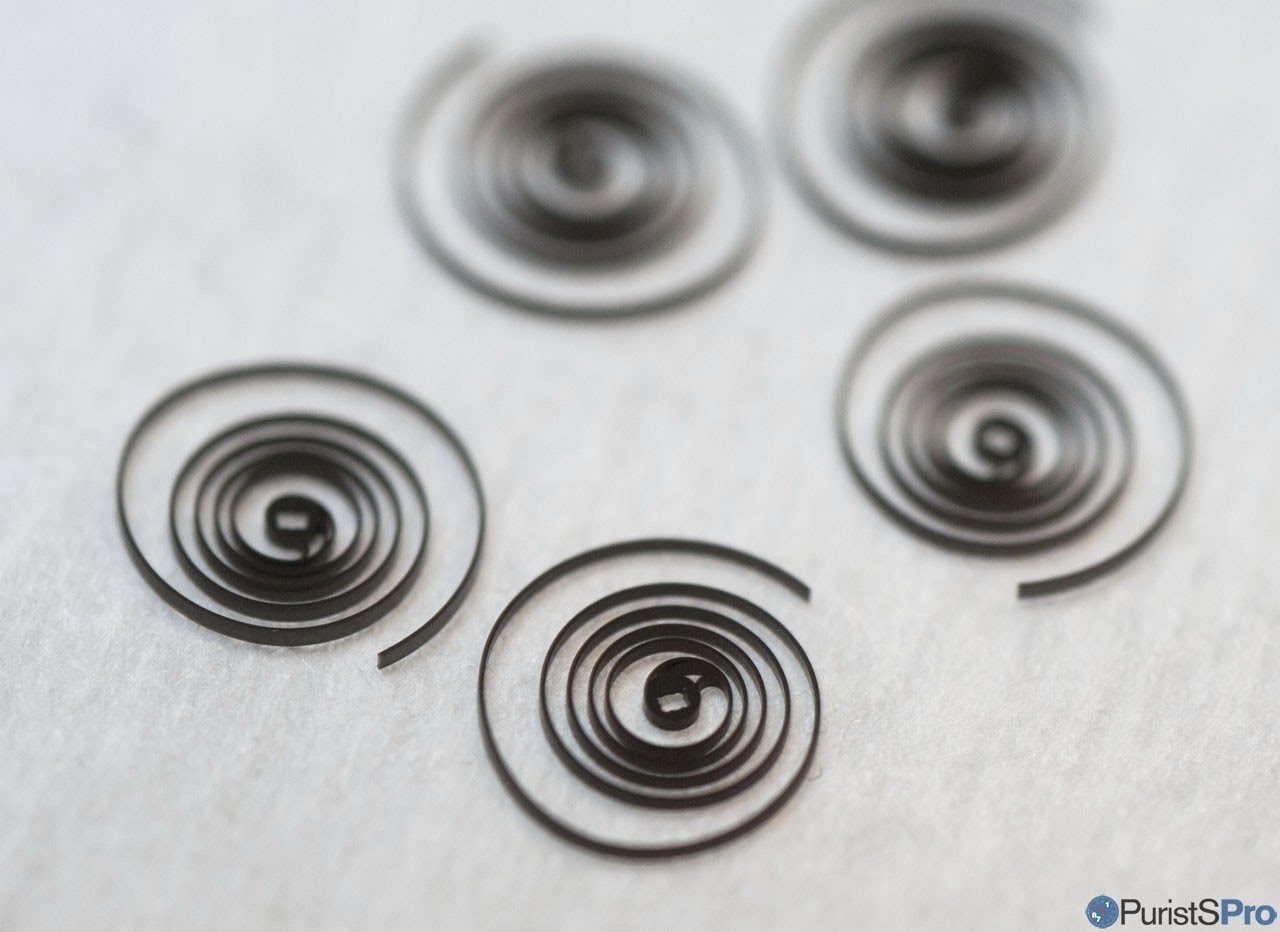
Zenith is currently setting up the necessary laboratory including the machinery to produce the composite in-house.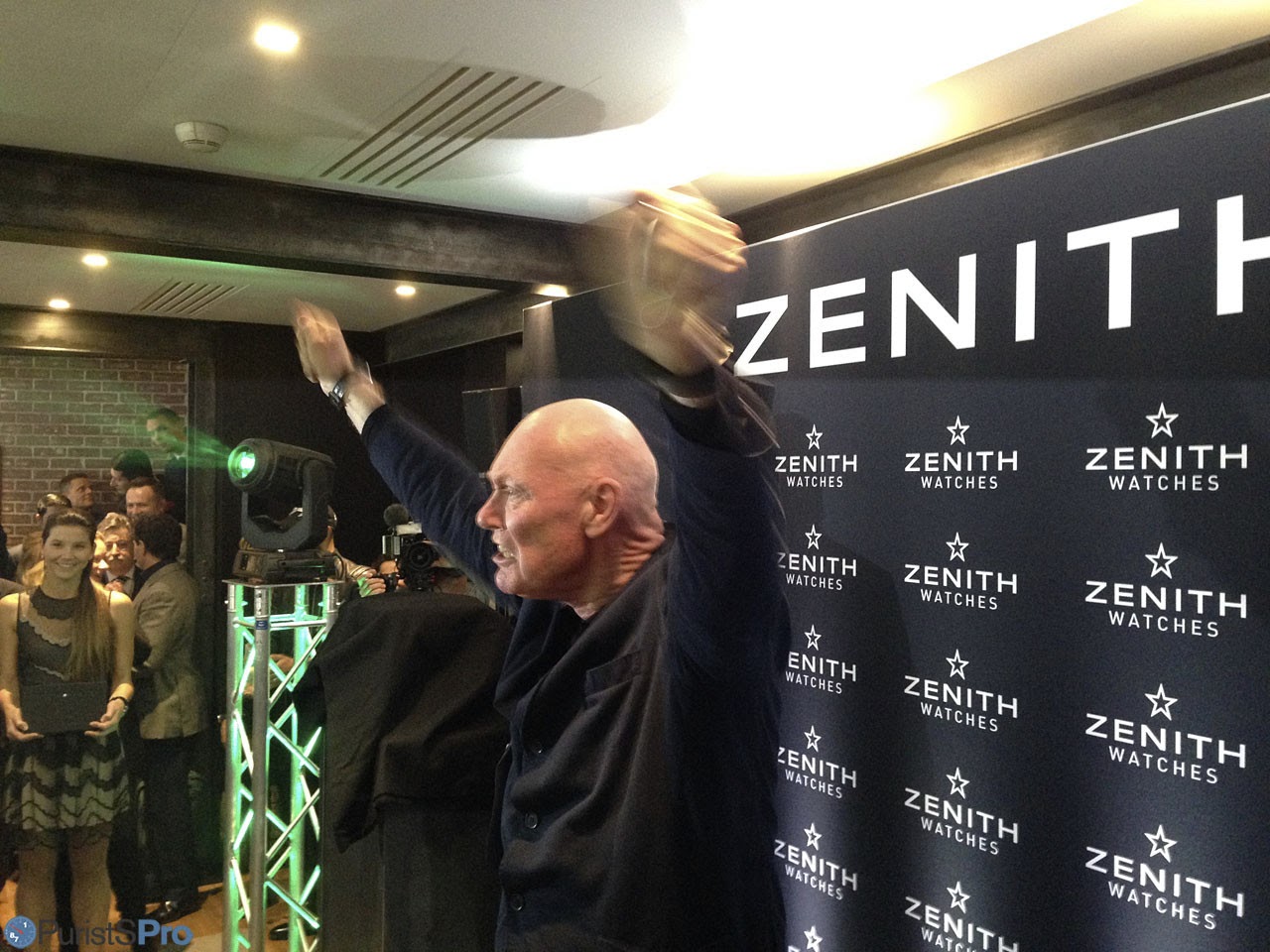
It is therefore with great justification that Jean-Claude Biver is all-over-the-top in view of this outstanding achievement!
Having all this in mind, wearing the Defy El Primero 21 gets a totally new meaning. Its a piece of history on your wrist.
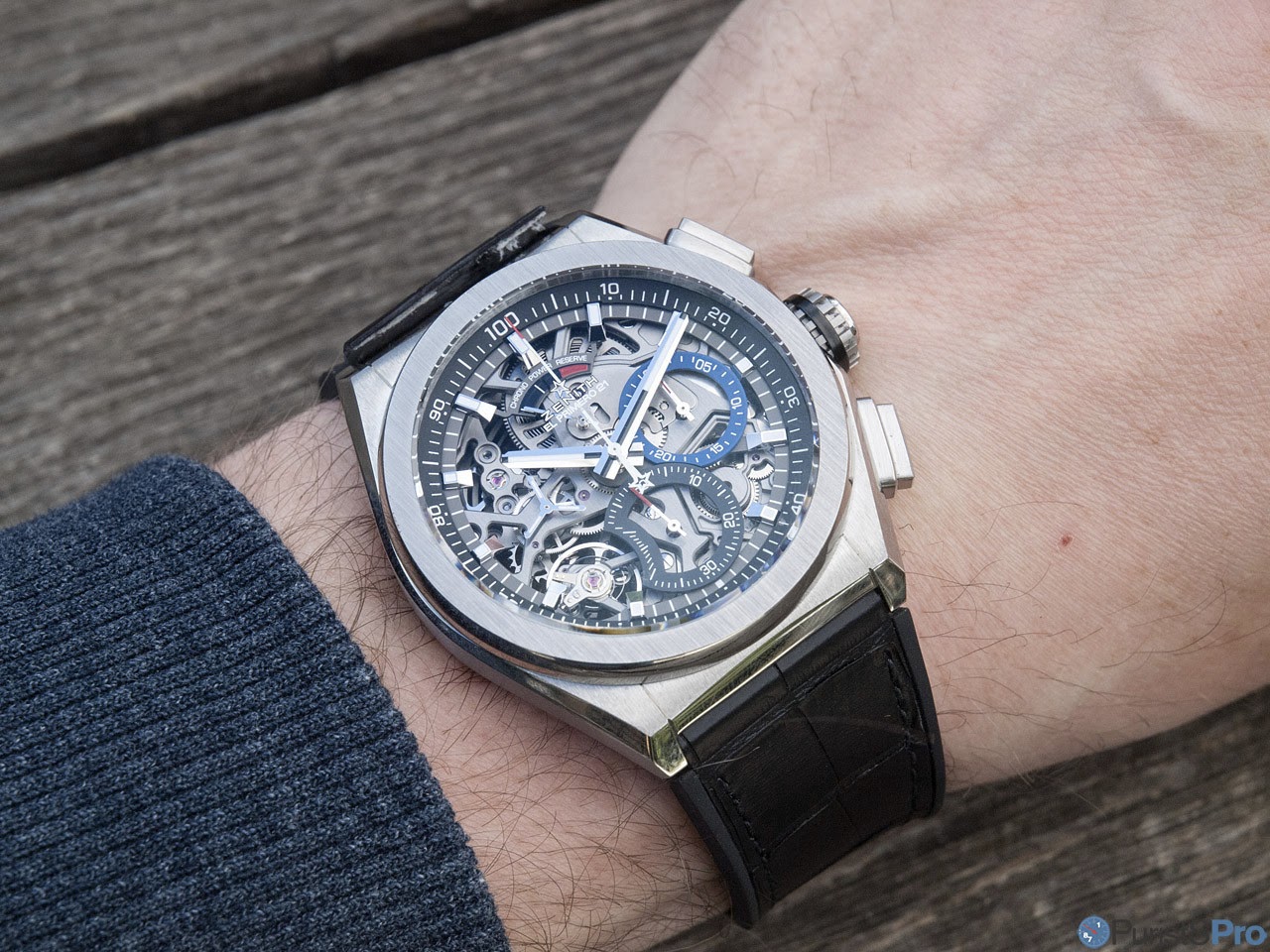
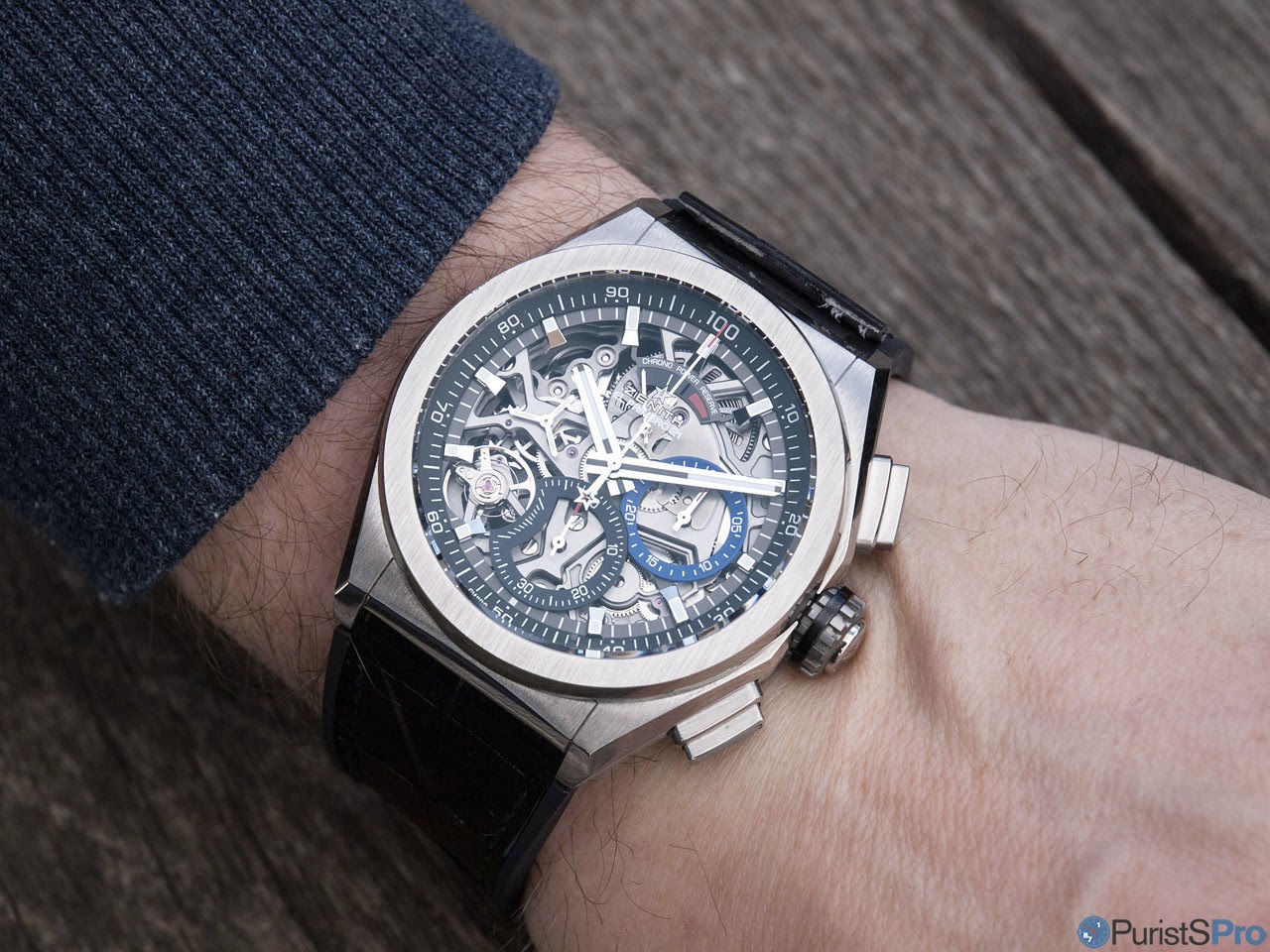
The Zenith Defy El Primero 21 is groundbreaking for the brand in many ways. The watch combines new performance levels combined with robustness through a confluence of constructional simplification and introduction of novele materials. The result might seem conflicting in several ways:
- The aesthetics, although aready atuned with marketing in mind, look different from what we would call 'fine watchmaking'. They clearly speak performance, reliability and efficiency.
- Simplification, always a great ingredient to achieve reliability, results in solutions less liked by us watch connoisseurs: the cam-operated chronograph, for example, will be seen as a downgrade from the El Primero, but it is reliable and can be produced without much human intervention - a definite plus in the specification sheet. Same goes for the reduction in parts count. Less parts, less trouble, less cost.
- The use of highly advanced materials put the Cal. El Primero 9004 firmly back on the track set by the original El Primero: forwards-thinking, embracing the future. Superior performance, stability, resilience, at the cost of using traditional materials and handwork. But such material progress makes significant gains in timekeeping possibile.
The new and revolutionary Defy Lab has proven exact the above!
Sure, the result is not for everyone. But for those who ache for the former pioneering, chronometry-centered spirit at Zenith, this might be noticed with relief. Its also a nod to Zenith's history, with one very great example: The famous chronometer-contest movement Cal. 707: a (competition-grade) racing machine, but not exactly a beauty:
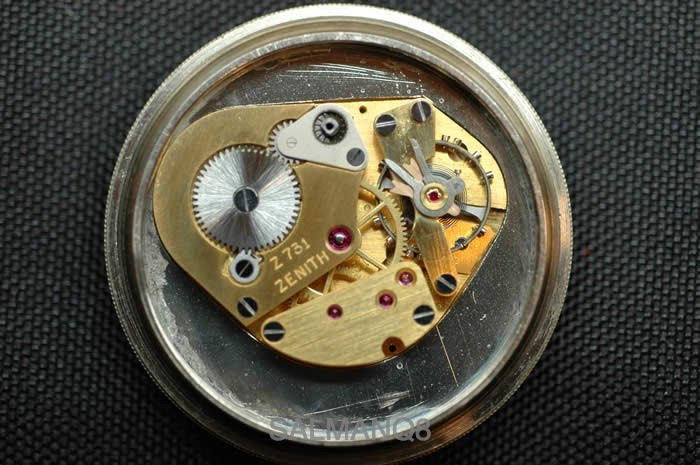
Déjà vu? JCB was right when he claimed that Zenith will be the Future of Tradition!
Thank you very much, both Jean-Claude as well as Guy Semon, for your dedication, passion and energy to bring this project to its successful completion, and your readiness and time to explain its specifics to me!
Best,
Magnus







Next Article


Happy Birthday Jean Claude Biver!

© 2017 - WatchProZine